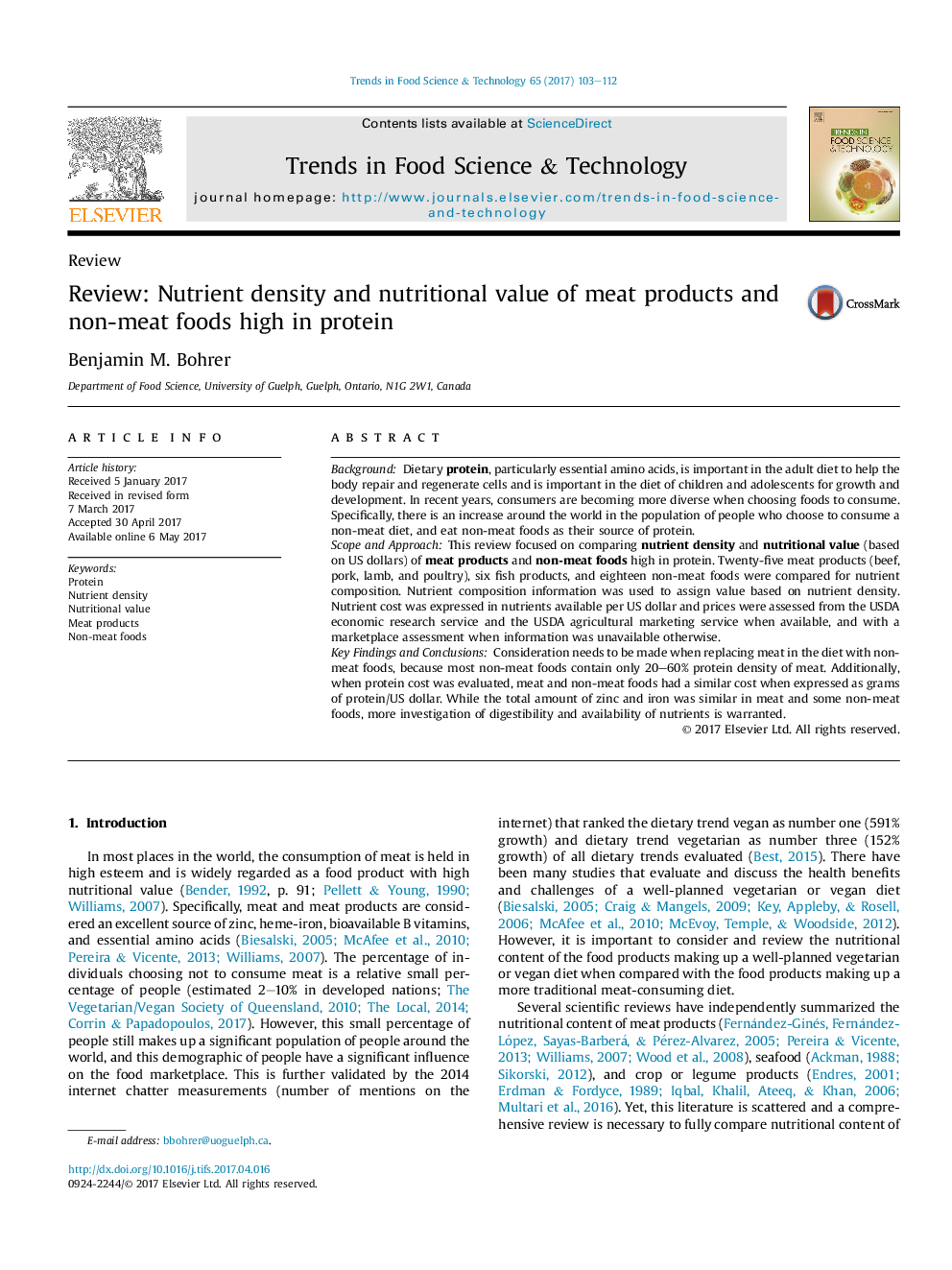| کد مقاله | کد نشریه | سال انتشار | مقاله انگلیسی | نسخه تمام متن |
|---|---|---|---|---|
| 5523749 | 1546114 | 2017 | 10 صفحه PDF | دانلود رایگان |

- Meat is an excellent source of protein, phosphorus, zinc, and iron.
- High-protein replacements for meat contain 20-60% of the protein of meat products.
- High-protein replacements for meat contain adequate phosphorus, iron, and zinc.
- Meat is not necessarily cheaper than non-meat products in protein density per cost.
- Seafood is generally more expensive than meat in nutrient density per cost.
BackgroundDietary protein, particularly essential amino acids, is important in the adult diet to help the body repair and regenerate cells and is important in the diet of children and adolescents for growth and development. In recent years, consumers are becoming more diverse when choosing foods to consume. Specifically, there is an increase around the world in the population of people who choose to consume a non-meat diet, and eat non-meat foods as their source of protein.Scope and ApproachThis review focused on comparing nutrient density and nutritional value (based on US dollars) of meat products and non-meat foods high in protein. Twenty-five meat products (beef, pork, lamb, and poultry), six fish products, and eighteen non-meat foods were compared for nutrient composition. Nutrient composition information was used to assign value based on nutrient density. Nutrient cost was expressed in nutrients available per US dollar and prices were assessed from the USDA economic research service and the USDA agricultural marketing service when available, and with a marketplace assessment when information was unavailable otherwise.Key Findings and ConclusionsConsideration needs to be made when replacing meat in the diet with non-meat foods, because most non-meat foods contain only 20-60% protein density of meat. Additionally, when protein cost was evaluated, meat and non-meat foods had a similar cost when expressed as grams of protein/US dollar. While the total amount of zinc and iron was similar in meat and some non-meat foods, more investigation of digestibility and availability of nutrients is warranted.
Journal: Trends in Food Science & Technology - Volume 65, July 2017, Pages 103-112